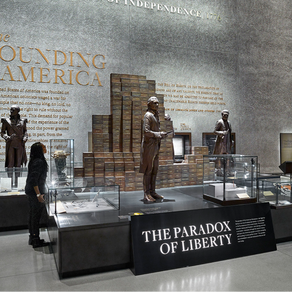Underrepresented History
It is important to address the underlying or hidden stories of all historic sites through the proper means of education. All visitors’ lived experiences are different, thus their background and understanding (which leads to their willingness to digest and accept “new” information) must be taken into consideration in developing new programs and educational experiences. This does not mean that information should be watered down, but instead approached in a way (and by docents/educators/curators who speak confidently in this context) that engages visitors in reflective discussion and provides space for them to reconcile “new” information with what they previously knew.
The Smithsonian’s exhibit detailing the history of slavery in the U.S. is the most popular area of the National Museum for African American History and Culture, indicating visitors’ desire to learn more than their school education provided. Often, lessons about slavery are subtopics, when they should be incorporated into every angle of American history. This idea carries over to museums and historical sites. Understanding slavery’s role throughout history is critical for understanding it’s legacy in economics, politics, and education.






